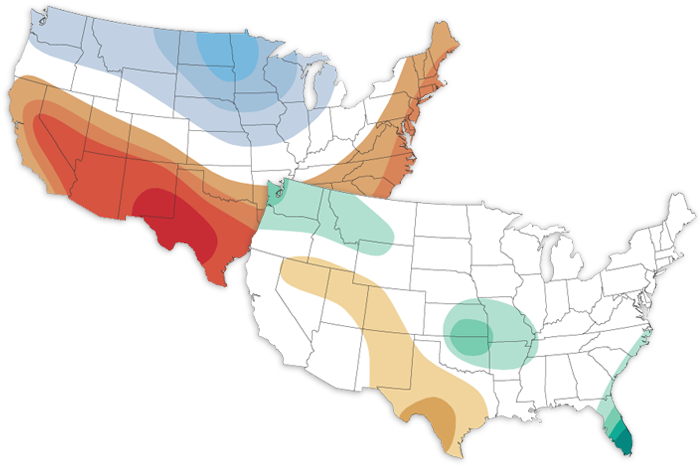The chances that La Niña will last through summer are only slightly higher than the chances of a short dip into neutral before returning to La Niña by early winter. How will it affect the hurricane season?
Summer-like heat felt across much of the South during May. Drought conditions improve for some, yet remain across much of the West.

The June climate outlook favors a hotter-than-average start to summer for the southern and eastern United States and a cooler-than-average June for the north-central and northwestern U.S.
Residents of Hawaii who've felt left out over the years as the ENSO blog has largely focused on the Lower 48, here's a post all your own.
Ongoing La Niña, above-average Atlantic temperatures set the stage for busy season ahead.
Despite the ongoing La Niña cooling the tropical Pacific, 2022 is virtually certain to be one of the 10 warmest years in the historical record.
As the ENSO blog turns 8, we're looking at the present nobody wanted: a La Niña three-peat looks increasingly likely this winter.
April was a little cooler than average for the contiguous United States, and it was a month for extreme events, with tornadoes, blizzards, and wildfires.
Two NOAA hurricane experts explain why it’s still so hard to say whether global warming to date has affected the number or intensity of Atlantic hurricanes.
If you're planting a garden this spring, this set of maps based on U.S. climate data can help you see how planting zones across the country have shifted over the past few decades.